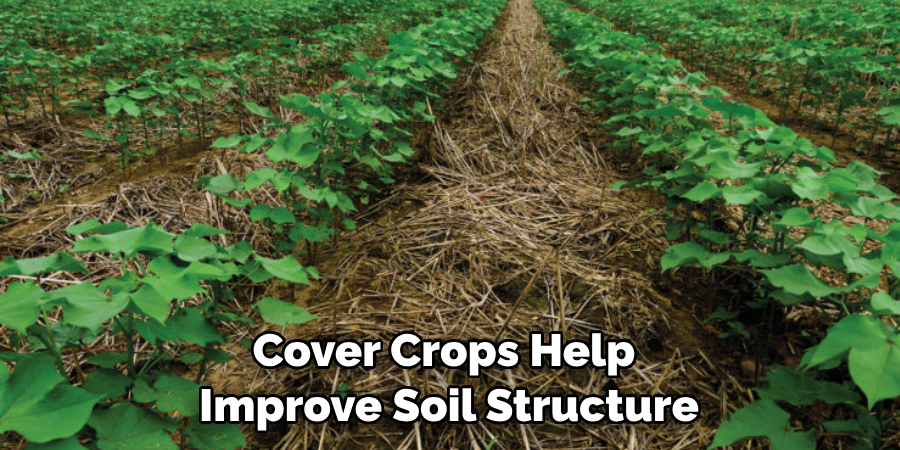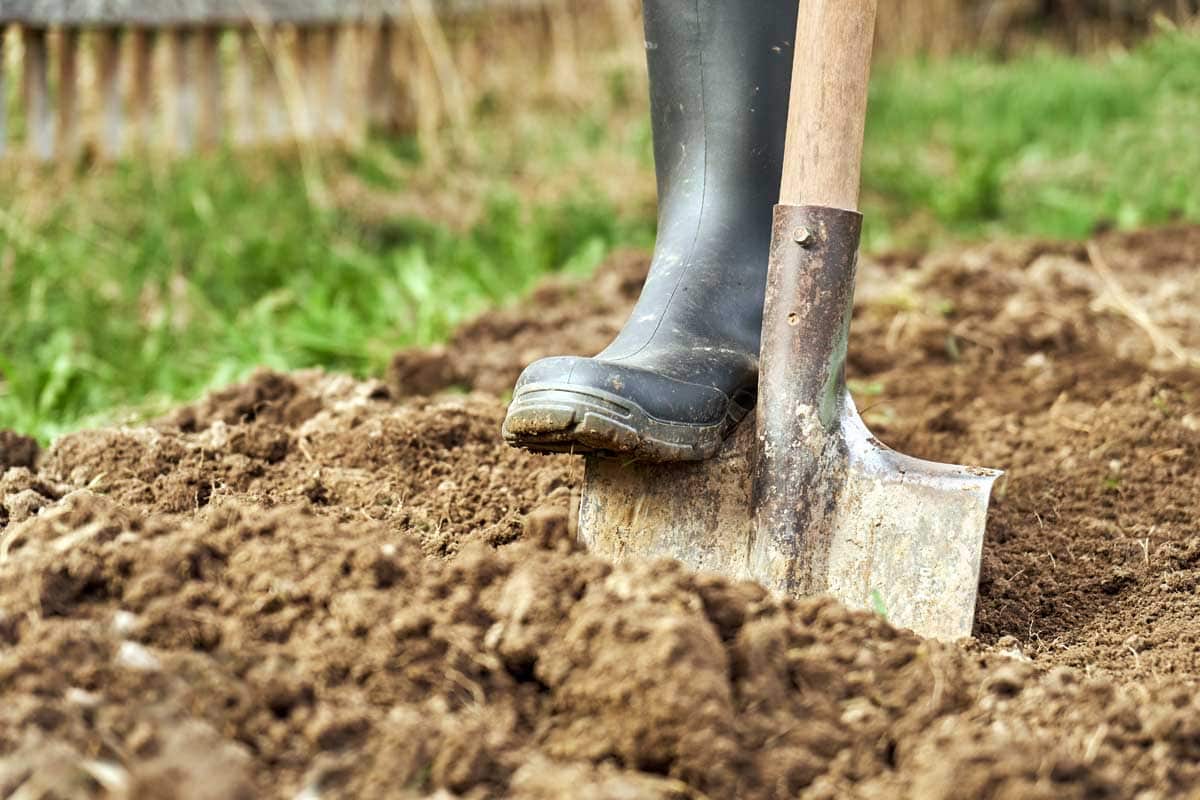To break up clay soil without tilling, incorporate organic matter and use amendments like gypsum and sand to improve soil structure and drainage. Clay soil can be a challenging gardening medium due to its heavy and compact nature.
It can hinder root growth and water movement, making it difficult for plants to thrive. Fortunately, there are methods to break up clay soil without resorting to tilling, which can lead to the destruction of beneficial soil organisms. By incorporating organic matter, such as compost and aged manure, into the soil, you can improve its structure and drainage.
Additionally, amendments like gypsum and sand can further aid in breaking up the clay particles, allowing for better air circulation and water retention. These techniques will create a more favorable environment for plants, promoting healthier growth and productivity.

Credit: thrivingyard.com
How to Break Up Clay Soil Without Tilling: Step by Step Guide
Reasons For Avoiding Tilling
Tilling is often avoided when breaking up clay soil due to its negative impact on soil structure. Tilling can disrupt the natural arrangement of soil particles, leading to compaction and reduced drainage. Additionally, tilling can introduce weed seeds to the surface, exacerbating weed problems in the long run.
Another disadvantage of tilling is the loss of organic matter. When the soil is disturbed, valuable organic material is exposed to decomposition and can be lost, diminishing soil fertility. Breaking up clay soil without tilling involves alternative methods such as adding organic amendments, using cover crops, and employing mulching techniques.
By avoiding tilling, gardeners can preserve soil structure, maintain weed control, and protect valuable organic matter, ultimately promoting healthier and more productive gardens.
Alternative Methods For Breaking Up Clay Soil
Clay soil can be a challenge for gardeners, but there are alternative methods to break it up without tilling. Proper watering techniques are essential in this process. By watering deeply and infrequently, you encourage the roots of plants to reach deeper, helping to naturally loosen the soil.
Another method is to incorporate organic soil amendments, such as compost or aged manure. These amendments improve the soil structure and increase its ability to drain. Cultivating cover crops is also beneficial for breaking up clay soil. These plants have deep roots that break through the compacted soil, improving its texture over time.
By implementing these alternative methods, you can effectively break up clay soil without relying on tilling techniques.
Implementing Proper Watering Techniques
Proper watering techniques are essential when it comes to breaking up clay soil without tilling. Deep watering is a great method that encourages roots to grow deeper into the soil. This helps loosen the compacted clay, making it easier to work with.
Another technique is frequent but light watering. This allows the water to penetrate the soil gradually, preventing runoff and allowing it to be absorbed by the clay. Additionally, mulching is another effective approach. By using mulch to cover the soil surface, moisture can be retained, which helps soften the clay over time.
Implementing these techniques will gradually improve the structure of your clay soil, making it easier for plants to establish and grow.
Using Organic Soil Amendments
Clay soil can be challenging to work with due to its compactness and poor drainage. However, breaking up clay soil without tilling is possible by using organic soil amendments. One effective amendment is gypsum, which helps break up clay particles, providing better aeration and drainage.
Compost is another useful option as it improves soil structure by adding organic matter, enhancing the soil’s ability to retain moisture and nutrients. Additionally, incorporating green manure, such as clover or legumes, increases organic matter content and improves soil fertility.
By using these organic soil amendments, you can transform heavy clay soil into a healthier, looser, and more fertile growing medium, ideal for cultivating a variety of plants and vegetables. So, get started by implementing these natural techniques and witness the positive impact on your garden’s soil quality.
Cultivating With Cover Crops
Cultivating with cover crops, such as planting winter rye, offers several benefits for breaking up clay soil without tilling. Cover crops help improve soil structure, prevent erosion, and increase organic matter content. These crops also suppress weeds and enhance nutrient availability.

Incorporating cover crops into the soil enhances soil health by promoting biodiversity and encouraging beneficial microorganism activity. Additionally, cover crops help to retain moisture, making them particularly valuable in regions with low rainfall or during dry seasons. By planting winter rye and other cover crops, you can naturally loosen and improve clay soil without resorting to tilling, which can disrupt soil structure and harm beneficial organisms.
This sustainable and effective technique allows for healthier, more productive soil in your garden or farm.
Frequently Asked Questions On How To Break Up Clay Soil Without Tilling
What Is Clay Soil And Why Is It Problematic For Gardening?
Clay soil is characterized by its compactness and poor drainage, making it difficult for plant roots to access water and nutrients. This can lead to waterlogging and nutrient deficiencies, hindering plant growth and health.
Can You Improve Clay Soil Without Tilling It?
Yes, you can break up clay soil without tilling by following practices such as adding organic matter like compost, using raised beds, incorporating gypsum, and practicing regular deep watering. These methods help to improve soil structure, drainage, and nutrient availability, creating a healthier environment for plants.
How Does Adding Organic Matter Help Break Up Clay Soil?
Adding organic matter, such as compost or well-rotted manure, to clay soil helps improve its structure. The organic matter binds to the clay particles, creating larger aggregates and improving drainage, aeration, and nutrient holding capacity. This allows plant roots to penetrate and grow more easily, breaking up the compacted clay.
What Is The Effect Of Gypsum On Clay Soil?
Gypsum is commonly used to break up clay soil because it helps to improve drainage and reduce compaction. When applied, gypsum breaks down the clay particles, allowing water to leach through the soil more easily. It also helps to create channels, promoting better root growth and enhancing overall soil structure.
Will Watering Deeply Help Break Up Clay Soil?
Yes, deep watering can help break up clay soil by encouraging deeper root growth. When you water deeply, the water percolates down into the soil, causing the roots to follow and grow deeper, gradually breaking up the compacted clay. Regular deep watering can lead to improved soil structure and healthier plants.
Conclusion
To conclude, breaking up clay soil without tilling is not only possible but also beneficial for your garden. By implementing methods like adding organic matter, using cover crops, and practicing smart watering techniques, you can improve the structure and fertility of your soil, making it easier for plants to grow.
These alternatives to tilling not only reduce soil erosion and save time but also promote soil health by preserving beneficial microorganisms. Additionally, the use of raised beds and mulching can further aid in breaking up clay soil without disturbing its natural ecosystem.
Remember to be patient and consistent with these techniques, as it may take some time for the soil to fully transform. Embracing these methods will not only provide you with healthy plants but also contribute to the sustainability of your garden and the environment.
So, go ahead and give these methods a try to create a thriving garden with clay soil.

